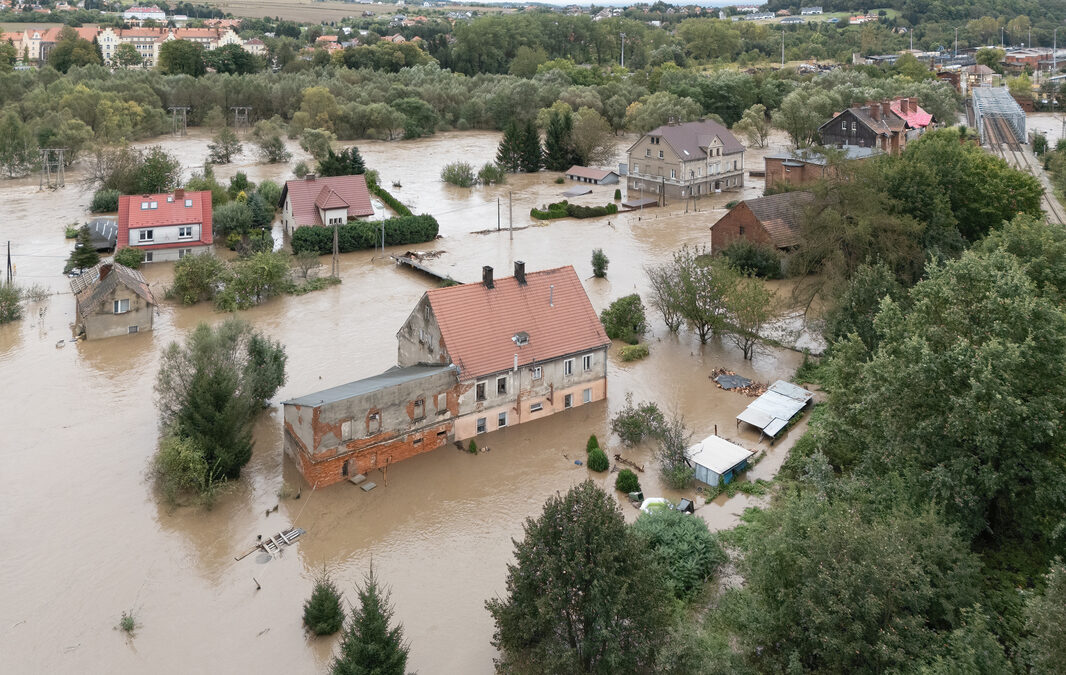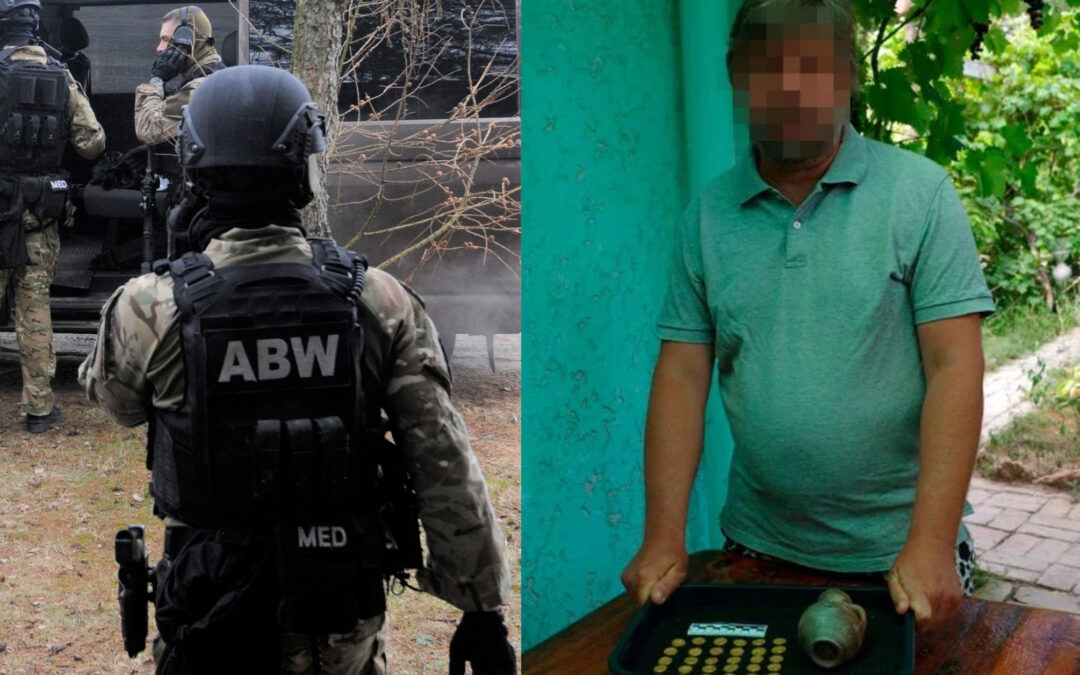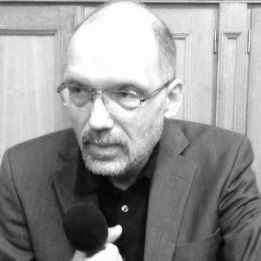Keep our news free from ads and paywalls by making a donation to support our work!

Notes from Poland is run by a small editorial team and is published by an independent, non-profit foundation that is funded through donations from our readers. We cannot do what we do without your support.
By Olivier Sorgho
Poland’s worst floods in nearly three decades struck the southern provinces of Lower Silesia and Opole in September, claiming nine lives, causing damages that the government estimated at over 13 billion zloty (€3 billion), and prompting the authorities to declare the country’s first-ever state of natural disaster.
More than 11,000 buildings were destroyed or damaged, including over 8,000 residential properties, the Central Office for Building Control (GUNB) said in an October report.
Seven months on from the floods, local residents and businesses are still struggling to repair and rebuild their properties, amid claims that insurers are not paying out and that the government has not done enough to help them.
The initial response
The Kłodzko Valley, nestled under the Sudetes mountains near the Czech border, was the hardest hit area after a dam collapsed in the town of Stronie Śląskie.
“We were woken by the hissing sound of water. It flowed so quickly that in a moment, it was right under the ceiling,” says Kłodzko resident Stanisław Stankowski. “I lost everything. We took out the TV, we managed to take out this little couch, documents and a few clothes.”
Major floods have prompted Poland's government to introduce a state of natural disaster for the first ever time.
Legal expert @J_Jaraczewski explains what powers this will grant the authorities and what restrictions it will place on freedoms and rights https://t.co/gSfN4ycA6c
— Notes from Poland 🇵🇱 (@notesfrompoland) September 19, 2024
The army and emergency services carried out evacuations and cleaned debris after the disaster, while charities, volunteers, businesses and private citizens rallied to provide victims with basic necessities. However, that early response was chaotic.
“People really wanted to help. But the order of delivering assistance got sort of mixed up,” says Edyta Dąbrowska, a volunteer and the niece of Stankowski. Her uncle shares an anecdote of being offered furniture by the local government which he would have been unable to use owing to the extensive damage to the floors and walls of his apartment.
Prime Minister Donald Tusk pledged in September that the Polish government would fund flood victims’ stays in hotels and other forms of temporary accommodation. However, Eliasz Wawrzyńczak, who was temporarily displaced from Kłodzko, says he could not apply for government-provided temporary housing as it was available only to people living in municipal buildings.
He and his family spent a few nights in a swimming pool complex that was repurposed into a shelter. “There were scores of people there, one camp bed next to another,” he recalls. Later, they were offered alternative accommodation by a private individual in Duszniki Zdrój, before eventually renting their own apartment elsewhere.
People around Poland have been donating money and humanitarian aid to help victims of major flooding in the southwest.
Many businesses have also been offering products and services for free while charities are organising donation campaigns https://t.co/5thq79Ulta
— Notes from Poland 🇵🇱 (@notesfrompoland) September 19, 2024
Others moved in with relatives, or relied on makeshift shelters. “For the first month, we stayed in a van.” says Natalia Skierkowska, who at the time of the flood lived next to the Biała Lądecka river, where she also ran a rental cabin business. “Later, a private Polish company lent us a residential container.”
Given the extensive damage caused by the floods, many people have so far been unable to return to their homes.
“Such people feel the burden of being away from home for so many months. They are lonely, we see depression, especially among the elderly who were uprooted from their hometowns,” says Helena Krajewska, spokesperson for the NGO Polish Humanitarian Action (PAH). The alternative was staying throughout the winter in damaged, damp homes with mould potentially developing, she explains.
“My apartment is still all wet. It didn’t dry out over the winter,” says Stankowski, who is currently renting another apartment with his 38-year-old son. “The walls are soaked. The cellars too. It will be a long time before I am able to return.”
Rebuilding homes
The government announced in September that flood victims could apply for up to 10,000 zloty in immediate aid, as well as a maximum of 100,000 zloty to repair damaged apartments and 200,000 zloty for entire residential buildings.
According to Tomasz Kułakowski, deputy director of the government’s department for monitoring flood reconstruction, around one billion zloty in flood aid has so far been paid out, including 625 million zloty for residential repairs.
“However, this is not the end of the process. Many people have deferred this benefit payment until spring,” he says. That is because those victims did not manage to dry out their apartments in time to begin repairs before the winter, Kułakowski explains. Some damage also became apparent only in spring. In response, the government extended the deadline to apply for flood aid by three months, until 15 June.
The government has put aside 1bn zloty (€234m) to support victims of ongoing major floods in Poland.
Those affected by the disaster will each be able to claim up to 10,000 zloty in immediate aid as well as larger amounts for long-term reconstruction https://t.co/RHafrfNJxC
— Notes from Poland 🇵🇱 (@notesfrompoland) September 16, 2024
While some victims waited for warmer weather, others fretted as payments were delayed. State broadcaster TVP reported in November that none of the 140 applications in Kłodzko had been paid. “I had to wait a month and a half, two months, for these funds,” says Stankowski.
The local social welfare centres (OPS) that handled payments were understaffed and overwhelmed with applications, says Kułakowski. Committees that were sent to victims to assess the damage faced the same problem, says the mayor of Nysa, Kordian Kolbiarz.
“Each of these committees had to include an appraiser, a sort of building inspector. In our city hall, there are three such people. With several hundred, nearly a thousand applications, it is difficult for two or three people to carry out this work in a few or a dozen days,” he explains.
Most of the municipalities that were devastated by floods two months ago have still not received funds to help residents repair damaged homes.
The government admits that the process has been "insufficient" and says it is seeking to accelerate payments https://t.co/IQ9zEHPmn9
— Notes from Poland 🇵🇱 (@notesfrompoland) November 18, 2024
Personnel changes, including the resignation of Maciej Awiżeń, governor of Lower Silesia, as well as legislative changes, such as the introduction of an advance payment of up to 50,000 zloty, helped improve things, adds Kułakowski.
But government funds do not necessarily cover the cost of repairs. Stankowski says the money was sufficient, but only because he and his son opted to rebuild on their own. “The construction firms charge enormously. Especially after the floods,” he continues.
Flood repairs involve mostly small and medium-sized projects, lowering the incentive for firms to travel in from other parts of Poland, which in turn overwhelms local businesses, explains Bartłomiej Sosna, a construction sector expert at market research firm Spectis.
Left without funds
However, not all victims received the government funds. OPS staff assessed the damages in Izabela Lagelbauer’s rented home in Kłodzko and concluded she was eligible to receive 105,000 zloty. Two months later, the OPS sent her a refusal on the grounds that she was not the owner of the apartment. She has been living there for 28 years.
“It was a terrible shock, a lack of understanding, despair,” she says. “I felt as if I had been crossed out. These funds are due to all those who lost their life’s possessions. It shouldn’t matter that I was renting the place.” She appealed the decision, but has not yet received a response.
Lagelbauer’s landlord could not have claimed the money either, as current legislation stipulates that flood aid applicants had to be actively running a household and physically be at the premises when the disaster happened.
The government in late April proposed amendments to the so-called “flood act”, including reconstruction aid for around 150 landlords whose commercial properties were damaged by the floods.
But the delays and unclear legislation have frustrated victims. “I believe these regulations were not prepared well enough for…the OPS to have no doubts as to whether they can pay someone,” says Skierkowska.
Insurance woes
Another route to home reconstruction was insurance. Some victims, like Stankowski and Wawrzyńczak, received both government funds and insurance payouts. The latter says his family received the bare minimum from their insurance. A growing number of complaints led the government to intervene.
“We have received reports from policyholders who had their compensation lowered, or had provisions in their contracts that were unfavourable, or delays, or a lack of contact, or various actions on the part of insurers that raised concerns,” says Kułakowski, adding that Poland’s consumer protection authority, UOKiK, is investigating whether firms systematically carried out unfair practices.
Some victims were denied insurance claims altogether. Lagelbauer says she had two separate insurance policies. One insurer paid out a sum which she believes was too low. Another sent a representative to assess damages and told her she would receive 100% compensation. Two days later, it sent her a letter claiming her policy lacked coverage from floods.
“I cannot verify this, because I lost all the documents in the flood. We requested copies and a full explanation of what was included in the contract,” she says. “Half a year has passed, and we still have no answer.”
Poland has deployed military police equipped with night vision and thermal imaging to protect areas evacuated due to ongoing floods from looters.
The defence minister says anyone caught stealing from victims of the disaster “will be severely punished” https://t.co/Wrog6aMDSY
— Notes from Poland 🇵🇱 (@notesfrompoland) September 17, 2024
Skierkowska points to obstacles which in some cases defy logic. She attempted to receive compensation for one of her firm’s cabins that was washed away by the flood. “Despite the cabin no longer being there, the insurer required a repair estimate from appraisers, or invoices for repairs carried out.”
By the end of March, the financial ombudsman had received 155 complaints from flood victims, says Maciej Sawa, the watchdog’s spokesperson. “As a result of the ombudsman’s arguments, insurers in some cases changed their previous position to the benefit of customers,” he adds.
At the time of writing, the Polish Chamber of Insurance (PIU) had not responded to a request for comment.
A tourism hub under pressure
The picturesque Kłodzko Valley has long attracted visitors and proven to be a popular destination for sending school children on winter holidays.
“Year by year, there were more and more tourists. I suspect that this year very few will want to come,” says Lagelbauer, who also runs a guest house in the area.
The data support those concerns. During this year’s winter holidays, the number of visitors to the Kłodzko region fell by 60% compared to last year, reported TVP. Meanwhile, the Gazeta Wyborcza daily reported in February that more than 70% of tourism companies in and around Stronie Śląskie and Lądek Zdrój were operating below break-even, despite some of them cutting prices.
Local businesses have been imploring the government to introduce a tourism voucher – a subsidy scheme offering tourists a one-off sum to pay for accommodation, which proved to be a success during the Covid pandemic.
The Polish province of Podlaskie, which borders Belarus, has launched a programme offering accommodation vouchers to tourists who visit the region, which has been hit by the ongoing migration and security crisis in eastern Poland.https://t.co/t8gugDcBut
— Notes from Poland 🇵🇱 (@notesfrompoland) March 25, 2025
To date, the government has offered a series of alternative solutions, including temporary tax exemptions, one-off subsidies, and loans. But the support has been far from adequate, two entrepreneurs told Notes from Poland. For example, businesses were not eligible to apply for subsidies to help cover the electricity costs of drying property.
Skierkowska explains that an appraiser valued her firm’s losses at over 3 million zloty. But the only substantial support she has received so far was a four-month exemption from paying into the state social insurance system (ZUS) and a one-off “intervention benefit” (RSI) from the same institution.
To stay or leave?
Local residents – and potential house buyers – are worried about future floods, as climate change makes weather more extreme and unpredictable. Just a week before southern Poland was inundated, water levels in the Vistula – Poland’s longest river – fell to a record low in Warsaw.
And the 2024 flood was not the first – the southern regions also suffered significant flooding in 2010 and 1997, among other years. “We have visited people who were flooded for the fourth time. They don’t know whether to rebuild or not,” says Kułakowski.
Human-induced climate change made the extreme rainfall that caused recent deadly floods in Central Europe twice as likely and 7% more intense, a group of scientists has found
They warn that rising global temperatures will make such events even more common https://t.co/CKG0oU9EeW
— Notes from Poland 🇵🇱 (@notesfrompoland) September 26, 2024
State water management agency Polish Waters in February unveiled a proposal to help reduce the risk of floods in southwestern Poland through measures such as natural water retention and the building of infrastructure, including flood reservoirs.
Six options have been discussed with residents and local officials in a consultation that finished at the end of April.
All options include a plan for the state to purchase land and real estate from citizens in order to build flood reservoirs. As a result, between 150 and 240 people would need to be relocated, according to Mateusz Balcerowicz, the deputy head of Polish Waters.
Stankowski says he would accept an offer from the state to sell his home and move elsewhere. So would Wawrzyńczak. “If I had the choice, of course I would look for something situated on higher ground,” he says. But he would not move away from Kłodzko itself as he has family, friends and a stable job there, he concludes.

Notes from Poland is run by a small editorial team and published by an independent, non-profit foundation that is funded through donations from our readers. We cannot do what we do without your support.
Main image credit: Jacek Halicki/Wikimedia Commons (under CC BY-SA 4.0)




















